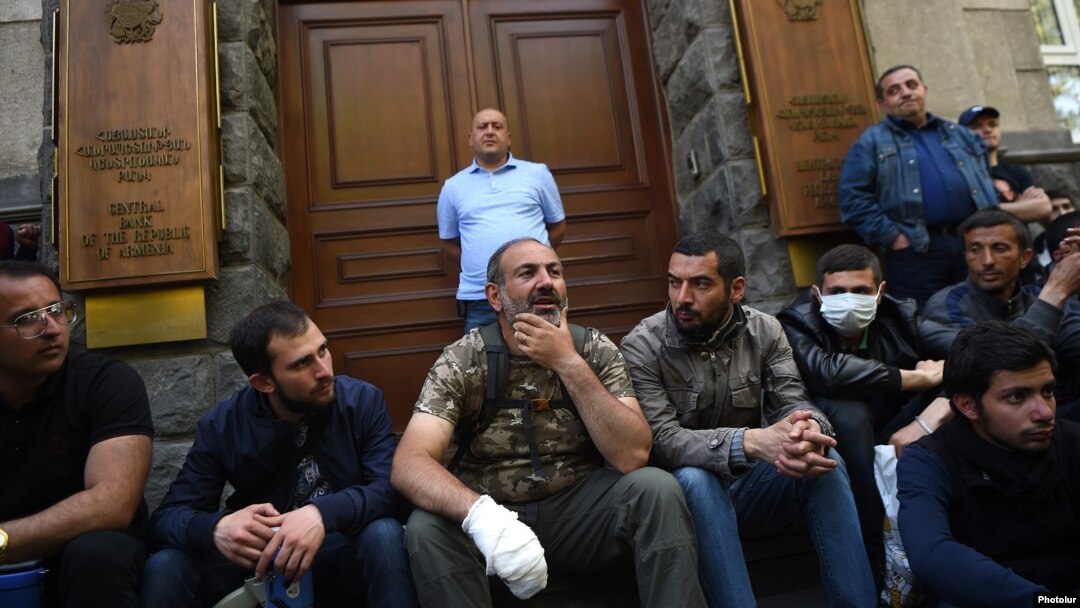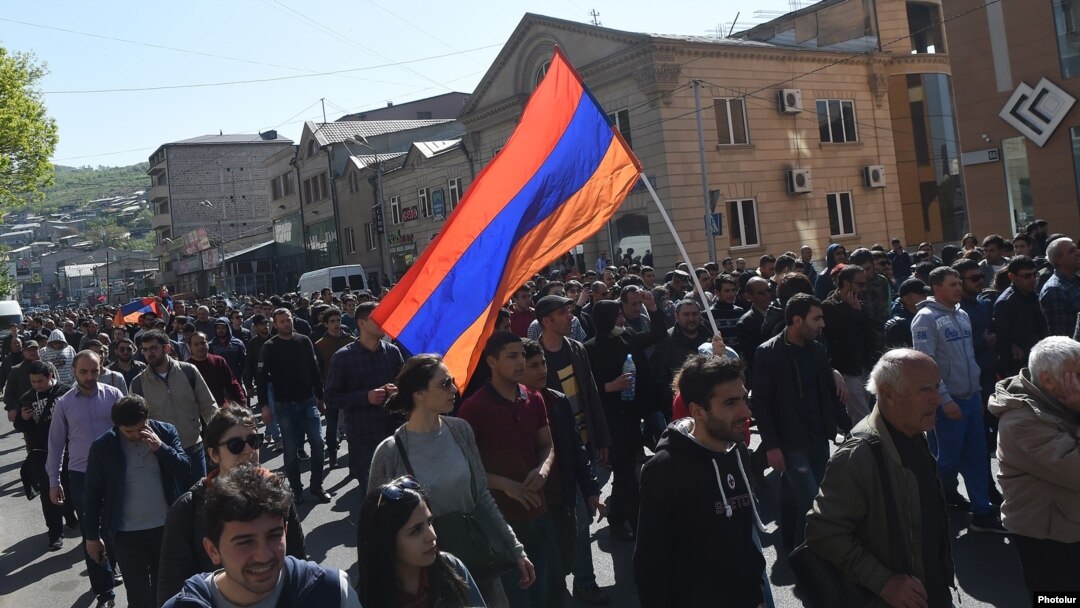Thousands of opposition supporters again took to the streets of Yerevan on Tuesday during a session of the Armenian parliament which formalized former President Serzh Sarkisian’s continued rule.
Opposition leader Nikol Pashinian, the main organizer of the daily protests, declared the start of a “velvet revolution” in Armenia as protesters walked past several key state buildings and blocked entrances to them.
“I am officially declaring that there is a revolutionary situation in the country,” he said early in the afternoon.
Pashinian urged Armenians to converge on Yerevan’s central Republic Square in the evening. He said he hopes to hold there “the biggest rally in Armenia’s history.”
The 42-year-old leader of the opposition Civil Contract party continued to defy police warnings to end his “illegal gatherings” or face their violent dispersal by security forces. The police said the use of force could start “at any necessary moment.”

Armenia - Opposition leader Nikol Pashinian and his supporters block the entrance to the Central Bank building in Yerevan, 17 April 2018.
Pashinian demonstratively ripped up one such written warning that was delivered to him by a senior police officer early in the morning. He then told about 100 supporters to walk from the city’s France Square, the focal point of the protests, to other parts of downtown Yerevan. The crowd grew much bigger in the following hours.
Also in the morning, police detained a separate group of protesters who tried to block traffic elsewhere in the city center. Pashinian spoke afterwards of around 30 detentions. The police did not confirm this number.
Meanwhile, dozens of other opposition supporters gathered at a street intersection in the city’s western Ajapnyak district. They briefly scuffled with police after blocking it. Some of them then sat on the ground to keep traffic blocked.
The parliament met at noon to elect Armenia’s new prime minister amid unusually tight security in and around its building. Hundreds of riot police and interior troops were deployed on nearby streets, including Marshal Bagramian Avenue, one of Yerevan’s main arteries which was the scene of clashes between police and Pashinian-led demonstrators on Monday. The security forces stood there behind several rows of razor wire.
Armenia - Riot police are deployed on Marshal Bagramian Avenue leading to the parliament building in Yerevan, 17 April 2018.
Police presence was particularly strong near Sarkisian’s nearby private residence. An RFE/RL correspondent saw several busloads of police officers and four armored personnel carriers on an adjacent street.
The nonstop protests seemed to be gaining momentum as the demonstrators again marched through the city center shortly after the start of the parliament session. They reached the Armenian ministries of foreign affairs, education and justice, the State Revenue Committee, the Central Bank and prosecutors’ headquarters, with Pashinian deploying groups of supporters at their entrances. Most of those buildings seemed empty and closed.
“Our task is to paralyze the work of the entire state system,” Pashinian told RFE/RL’s Armenian service (Azatutyun.am).
Sarkisian, who completed his final presidential term on April 9, has been nominated for the post of prime minister by his ruling Republican Party of Armenia (HHK) and its junior coalition partner, the Armenian Revolutionary Federation (Dashnaktsutyun). The two parties control at least 65 of the 105 seats in the National Assembly.
With Armenia switching to a parliamentary system of government, the next premier will be the country’s most powerful official.


